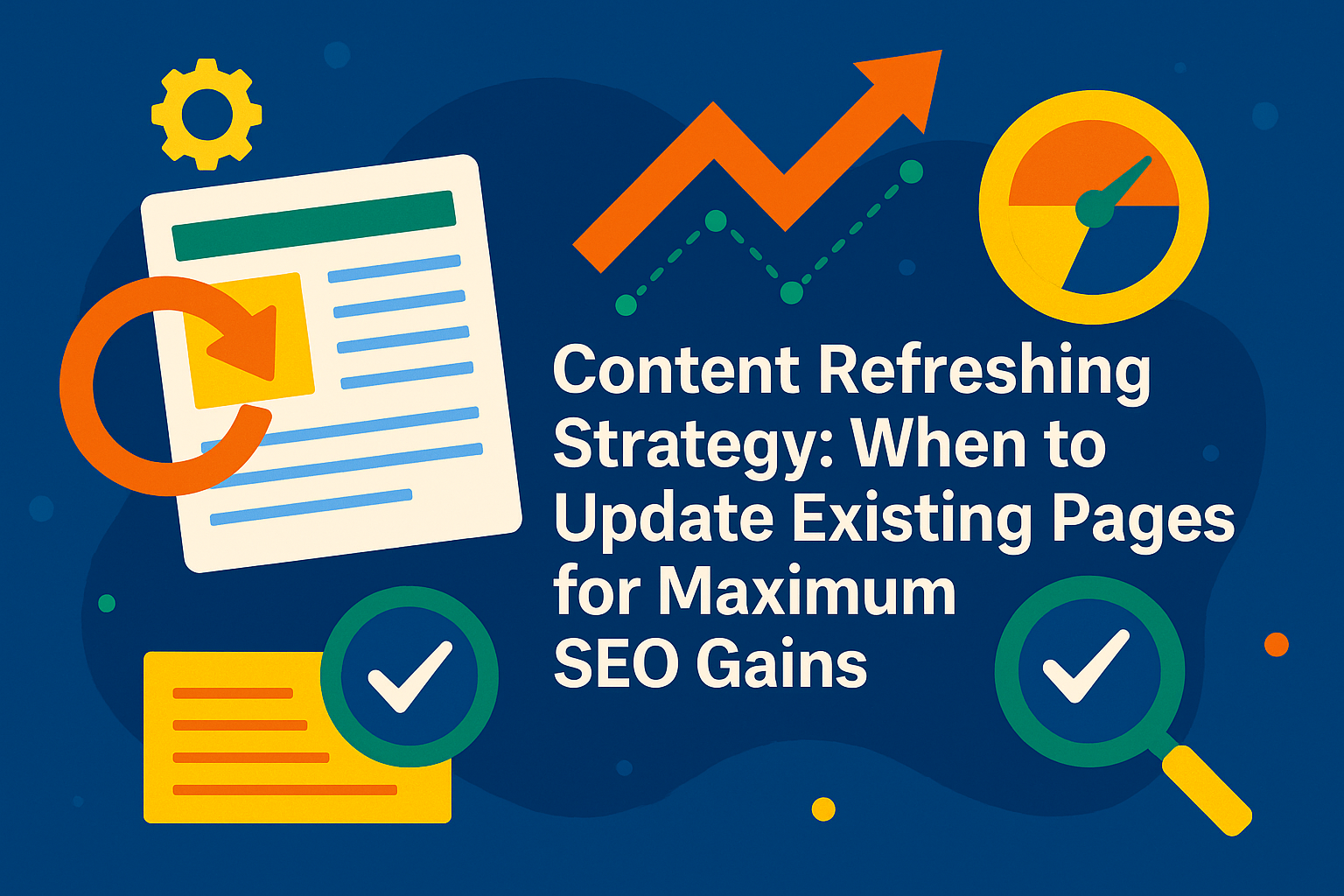By Janice Ramos
If you’re investing in SEO and content, chances are you already have a library of blog posts, landing pages, and service pages working to drive traffic. But here’s the catch: SEO isn’t a set-it-and-forget-it game. Search engine algorithms evolve, and so do your competitors. That’s why a well-planned content refreshing strategy is essential for staying relevant in search and staying ahead in business.
Why Your Content Needs a Refresh
Over time, even your best-performing pages can lose their edge. Maybe the stats are outdated, the keywords have shifted, or your competitors have published more comprehensive content. A solid content refreshing strategy ensures your content remains visible, competitive, and aligned with what your audience is searching for right now.
Think of it like tune-ups for your digital engine, same content foundation, better performance.
Signs It’s Time to Refresh a Page
Not sure which content to prioritize? Here are some indicators that a refresh is due:
- Declining search rankings for previously strong keywords
- Decreased traffic to key pages or blog posts
- Outdated statistics or product details
- Low time-on-page or high bounce rates
- Changes in your business offerings or target market
By integrating a content refreshing strategy into your SEO workflow, you don’t just maintain rankings, you build on them.
What to Update (And What to Leave Alone)
Updating content doesn’t mean rewriting everything. In fact, your updates should be strategic. Focus on:
- Replacing outdated facts or broken links
- Expanding sections to improve depth or keyword coverage
- Adding internal links to newer content
- Refreshing headlines and meta descriptions to improve CTR
- Enhancing formatting for better mobile readability and UX
And if a page is still ranking well but beginning to slip, a light refresh might be all that’s needed to boost its performance.
How Often Should You Refresh Content?
There’s no one-size-fits-all answer, but reviewing your top 10-20% of organic performers every 6–12 months is a good rule of thumb. Using tools like Google Search Console and Google Analytics can help identify content that’s declining in clicks or impressions.
Make your content refreshing strategy part of a quarterly SEO sprint. It’s one of the most cost-effective ways to increase traffic and improve ROI without creating brand-new content from scratch.
Refreshing vs. Republishing: What’s the Difference?
- Refreshing means updating the existing content while keeping the same URL.
- Republishing might involve significantly rewriting a post and updating the publish date to boost visibility.
Both approaches have value, but for SEO equity and backlinks, refreshing existing pages is often the smarter play.
Maximize ROI With Less Content, Done Better
If your SEO results have hit a plateau, or you’re not seeing return on your content investment, it may be time to shift your focus. Instead of creating more content, improve the content you already have. A targeted content refreshing strategy can help you regain lost rankings, drive more traffic, and ultimately turn your content into a revenue engine.
Need help building a high-ROI content and SEO plan that drives real leads?
DoubleDome Digital Marketing specializes in helping B2B service businesses maximize organic performance through data-driven SEO strategies, including content refresh campaigns tailored to your goals.









